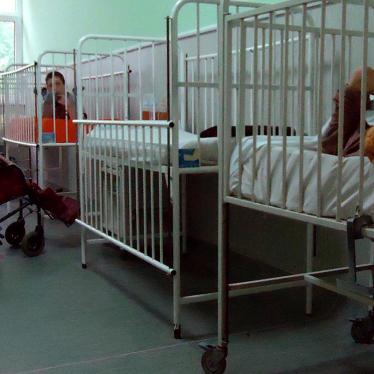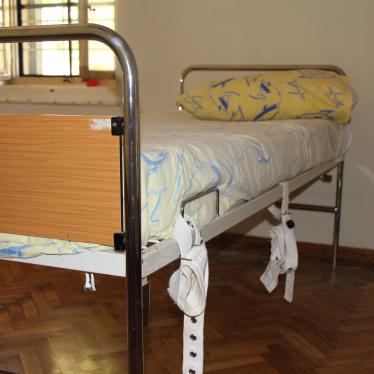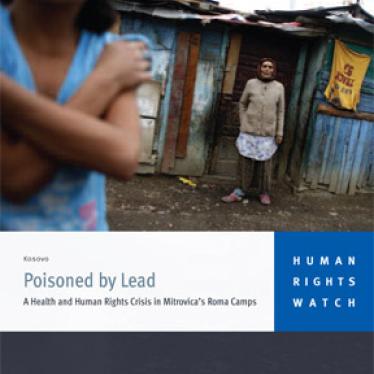At the peak of the Covid-19 infections, on April 30, the Serbian government published data that 574 people living in residential care institutions, including those for people with disabilities, had been infected with the virus. More recent numbers indicate that the number has gone down—119 on May 25.
The Serbian government deserves praise for publishing this daily data. However, the data does not provide clear information about the total number of infections and deaths inside institutions since the start of the pandemic. The numbers published so far leave many questions unanswered, including how many of the 574 people identified as infected on April 30 have died?
Since early April, I’ve been urging the Serbian government to publish clearer, more detailed information. I’ve sent letters and emails and made many calls to the Ministry of Labour, Employment, Veterans’ Affairs and Social Affairs, the Ministry of Health, and the Institute for Public Health.
At time of writing, the only response I have received was from the Ministry of Social Affairs on May 6, saying only: “The information you requested will be published on the website of the [Ministry] immediately after the end of the state of emergency.” Authorities ended the state of emergency the same day, but have yet to publish the requested data.
An important part of addressing the Covid-19 pandemic is understanding the scale and circumstances of infections and deaths. Collecting this data is necessary to inform government policy, decision-making, and care. Publishing this data helps the wider public understand the impact of the outbreak on social care institutions.
The Covid-19 pandemic has provided further evidence of the many risks that institutional life poses. Evidence from around the world shows that Covid-19 spreads rapidly and people living in close proximity to others in closed settings are at particularly high risk of infection.
Reports on Covid-19 deaths and infections in residential institutions have emerged from Britain, France, Italy, and Russia, just to name a few. People with certain types of disabilities, such as those that affect respiratory capacity, and older people are at higher risk of severe illness and death from Covid-19 infection.
According to the Serbian government, over 23,000 people with disabilities and older people are confined to institutions in Serbia. Some people with disabilities have lived in institutions for their entire lives.
I visited numerous institutions for people with disabilities in Serbia in 2015 and 2017. I saw up to 17 children and adults with disabilities living together in one room, where they spent most of their days and nights. They often had to share their clothes. Some people with disabilities with high support and medical needs were confined to crowded wards that they rarely left, even to get fresh air. These institutions lacked independent and periodic monitoring to ensure that children and adults with disabilities who live in them are protected against abuse and neglect. We published these findings and other serious concerns, including neglect and inappropriate medication, in a 2016 report.
Following the first reports of Covid-19 infections in Serbia in March, the government publicly announced measures aimed at protecting people living in institutions. The authorities ordered the immediate transfer of infected people to health care facilities. Other measures included isolating people with confirmed cases of Covid-19 inside institutions and temporarily prohibiting visitors and movement.
While restrictions on visitors is a legitimate measure to limit risk of infection, and a measure employed in many countries, it also means that there are fewer eyes to spot the abuse and neglect that I documented. Clear government data on the number of infections and deaths, and information on measures to control infections and prevent deaths, would help shed light on the situation inside institutions when no family members or monitors have the opportunity to see the situation first-hand. Releasing data would also provide more confidence to families and the public that there is nothing to hide.
The release of such information would be a measurable demonstration of Serbia’s commitment to protect the rights of people with disabilities, from the youngest to the oldest. It should also ensure accountability for any failings that may have led to avoidable illnesses and deaths. But it will also help focus attention on the need to ensure that people with disabilities can move from institutions to live independently in the community and to invest in community-based services to empower and support people with disabilities.
We know that it’s possible and some steps can be taken— even in a crisis. For example, in recent months in Moscow, people have opened their homes to people with disabilities living in state institutions to help protect them from Covid-19 infection. The institutions helped people get set up in their new locations and they provide regular support and information to the host families via phone.
Moving people with disabilities out of institutions can be done safely, including during the Covid-19 pandemic. It does, however, take political will.








